Botanical Dye | Dyeing Cotton With Goldenrod
Home »
23.08.2023
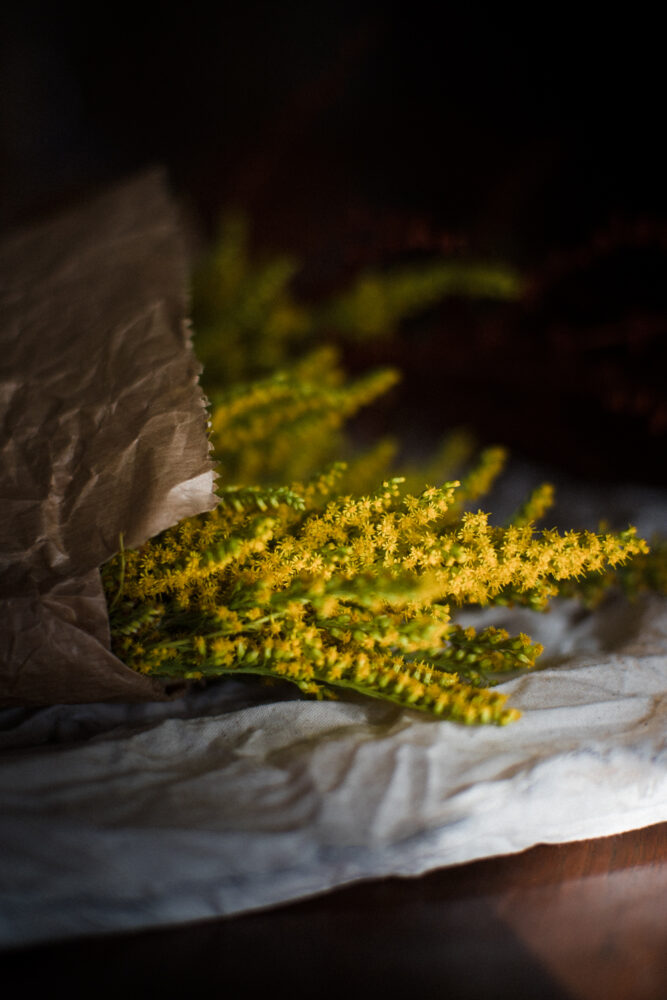
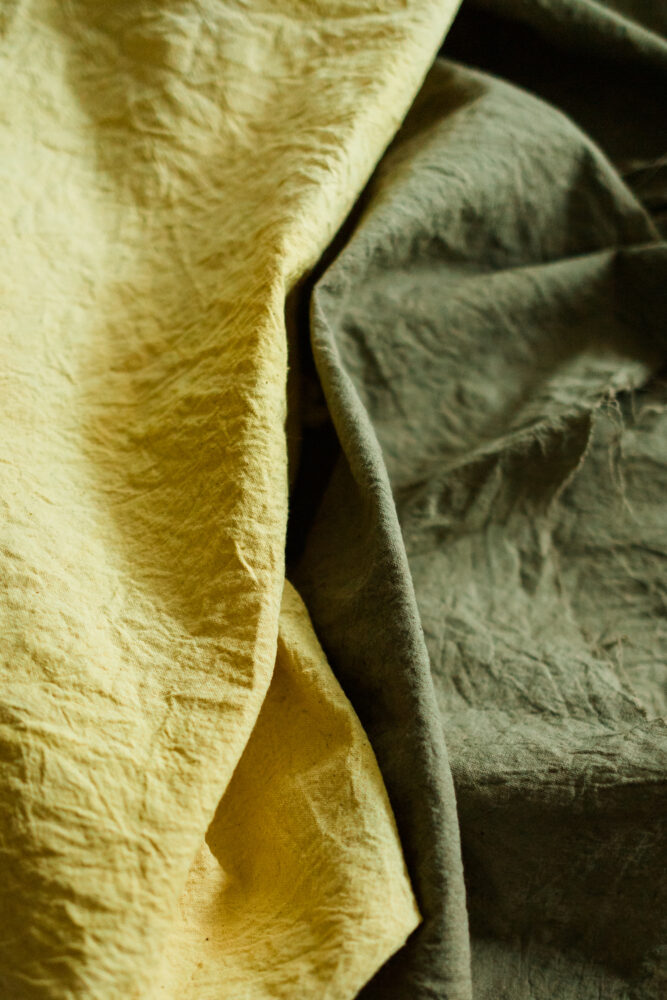
I have been curious to try dyeing with plants for a while now, and finally got round to it. For my first dye pot I chose goldenrod (solidago canadensis) as it grows locally on wasteland. There’s plenty growing alongside the canal, and August is the month it blooms.
I picked 180g of flowers, just snipping off the flower tops and leaving the stems. There was so much of it that I barely made a dent in the stand and there were plenty of flowers and pollen left for insects to feed on. When gathering plant materials for dyeing and other crafts, it’s important to only gather what you need and not to take from a resource that is in short supply. Goldenrod is invasive and plentiful though, in many regions of the world.
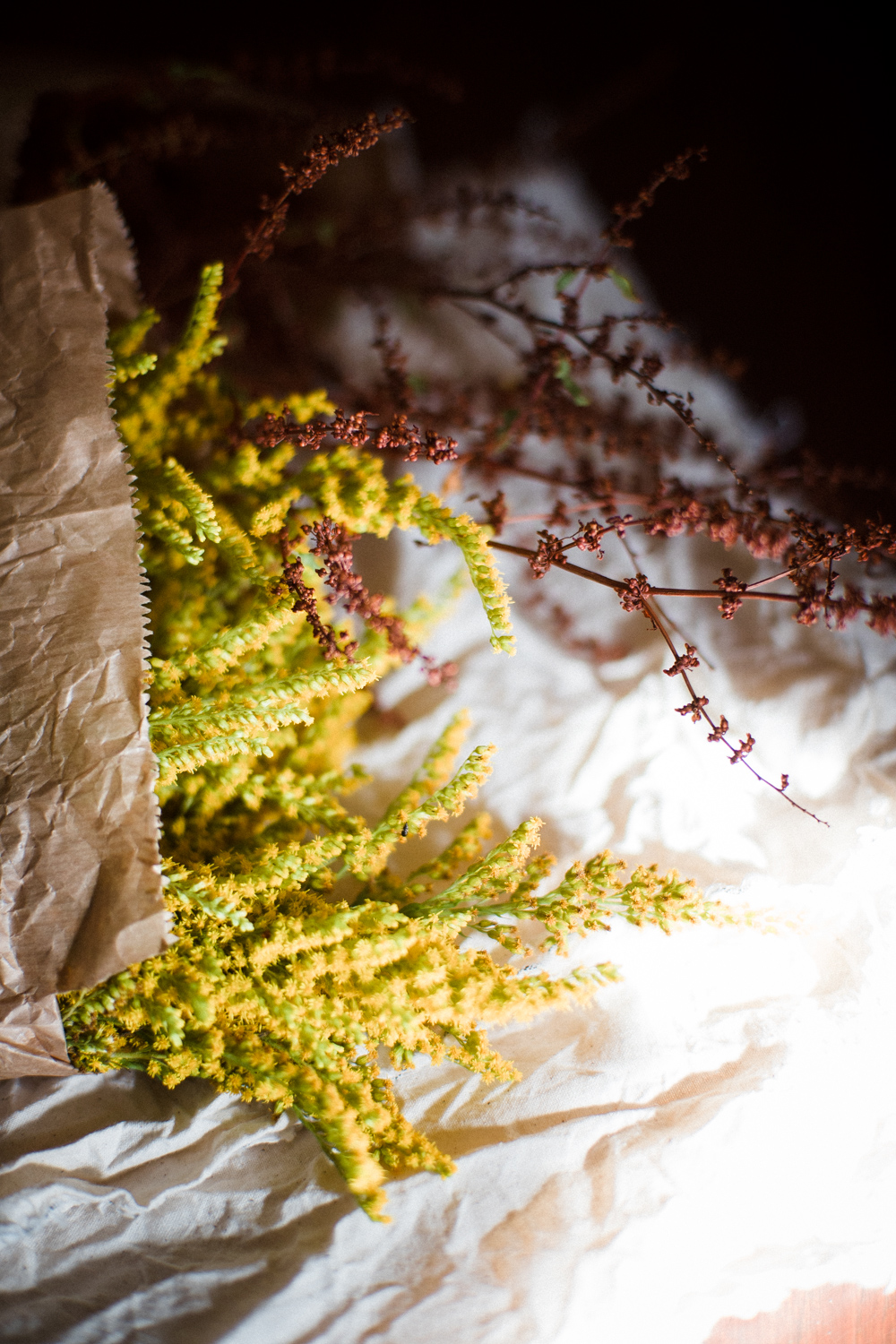
Whilst I was gathering goldenrod I collected curly dock seeds for a future dye pot.
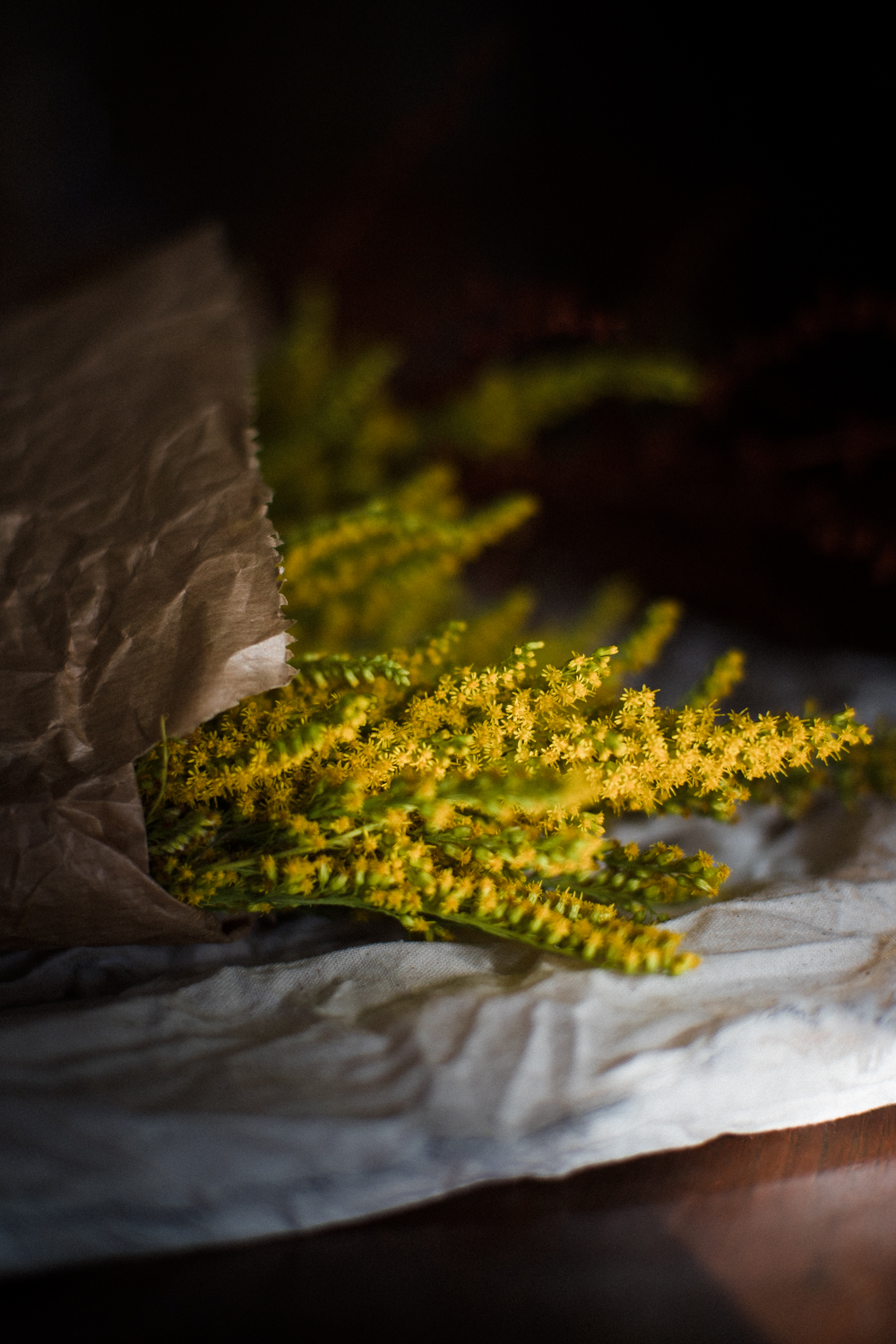
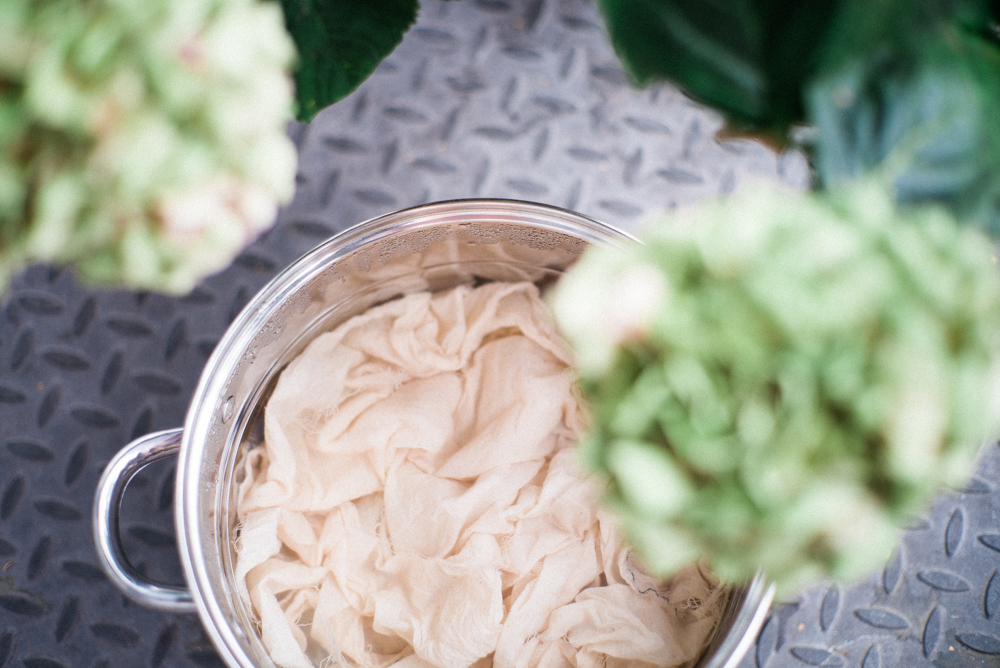
I wanted to dye some cotton calico, with a weight of approximately 160gsm. It’s unbleached, untreated ‘loom state’ fabric, perfect for dyeing. I didn’t scour it as I didn’t have washing soda to begin with (I have found a source of it locally in a little corner shop) but I did run it through my washing machine before working with it. Then I mixed a mordant bath using 20% WOF aluminium sulphate. Aluminium acetate is the type of aluminium mordant commonly used as a mordant with cellulose fibres, as it gives the clearest and brightest colours. Aluminium sulphate is the next best with cellulose, and aluminium potassium sulphate is the other option. This last option is what is usually sold as ‘alum’, and it’s best with protein fibres though it can be used with cellulose fibres too. I found this blog post by Suzanne Dekel – and her blog in general – a great resource for reading and learning about mordants. After adding the aluminium sulphate powder to my pan with some water I brought the mixture up to a simmer and left it on the lowest possible heat for 45 minutes, with the fabric submerged below the waterline. I then transferred the pan to my balcony and left it to cool and soak for 24 hours.
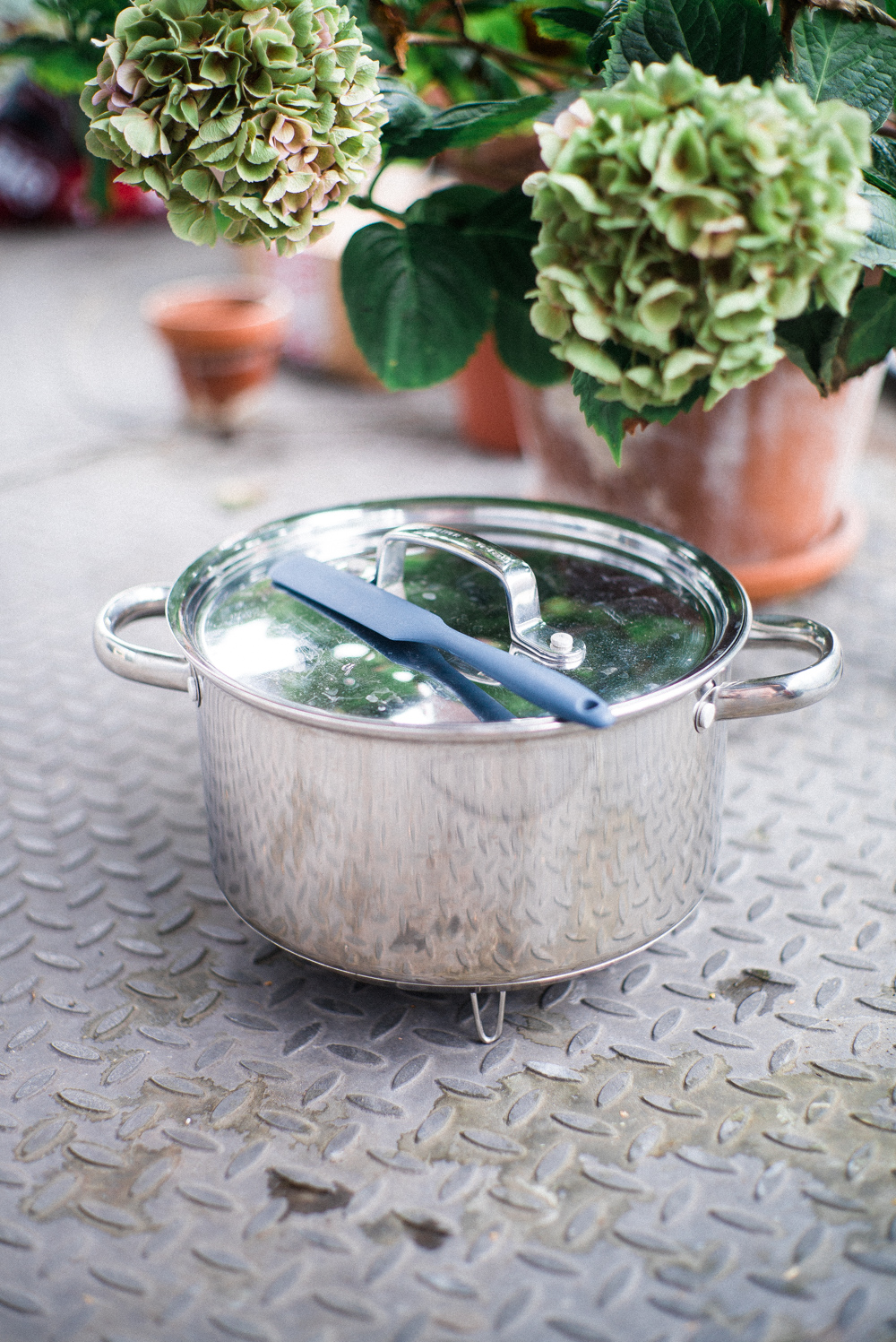
As for the dye itself, I created that in a similar fashion. I placed 180g goldenrod flowers in a large stainless steel pan, added water, and brought the mixture to a simmer. Then I left it on the lowest heat for 45 minutes, before setting it on a trivet on the balcony to brew for 24 hours. Next, I strained the mixture through a piece of kitchen towel and sieve to remove all the flowers, and set it aside until my fabric was finished in the mordant bath.
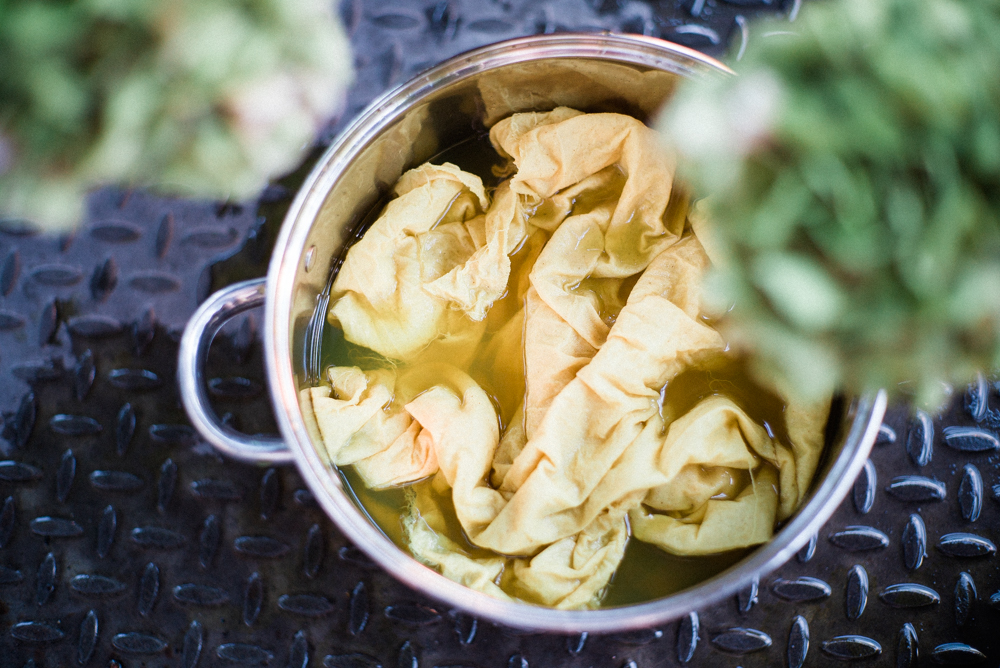
The final part of dyeing involved transferring the cotton, whilst still wet from the mordant bath, to the stainless steel pan which now contained the strained dye. I heated it back up by bringing it to a simmer (not boiling) and then turned the heat down to the lowest level. After 45 minutes, I moved the pan off the heat and left the fabric to soak in the cooling dye bath for 24 hours.
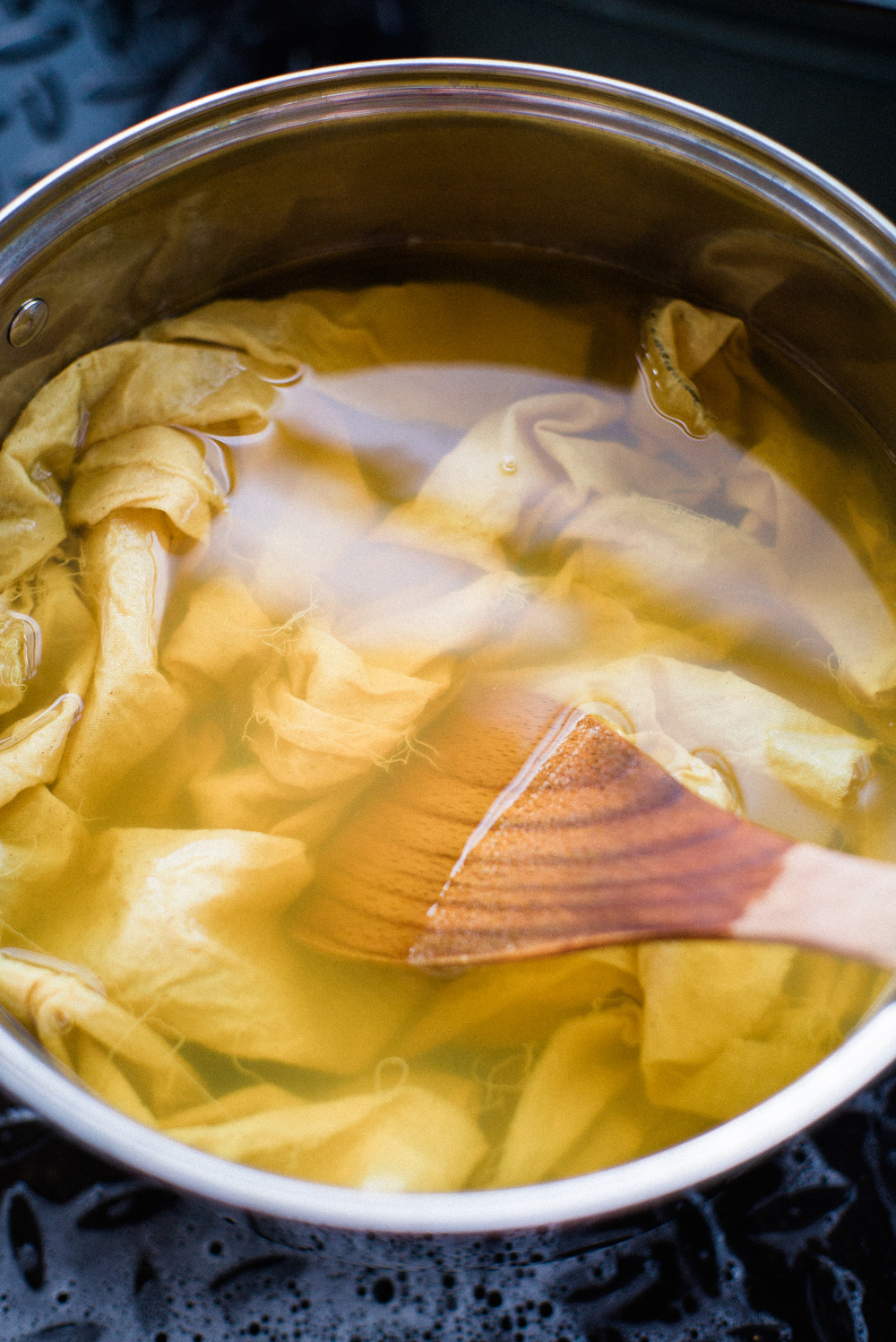
I squeezed the dye out, rinsed the fabric in cold water, and then hung one piece to dry. The other piece I immersed in a ferrous sulphate bath created with 1/2 tsp ferrous sulphate powder and a small amount of water. This was probably too much iron, and I could have used less. Within 5 minutes my cotton had changed from buttercup yellow to olive green. I rinsed it, and hung it to dry. I then left both pieces to cure for a few days before hand washing them with washing powder. The curing time hopefully helped the fabric hold onto as much colour as possible.
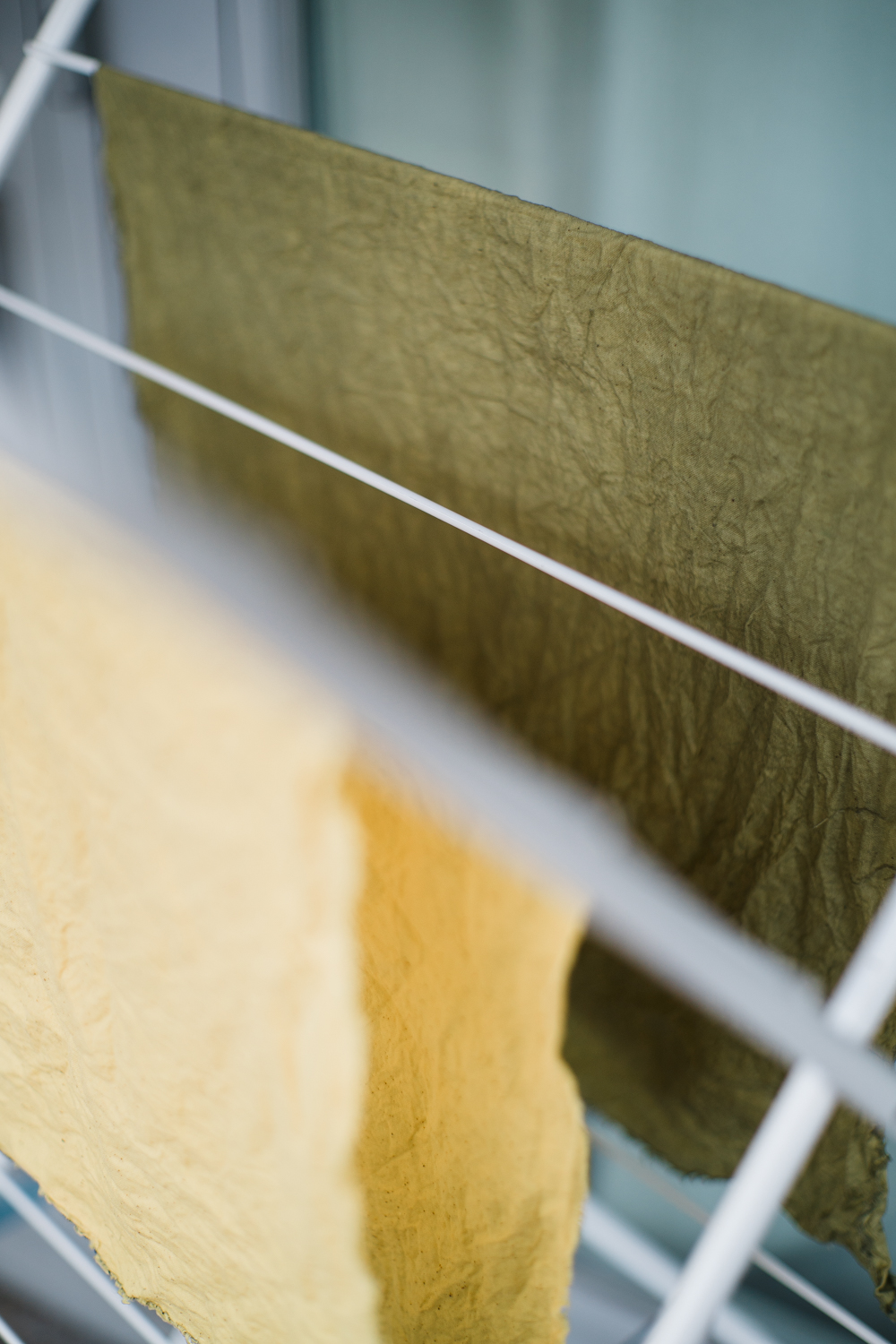
It was a really fun process, and I’m pleased with the colours I achieved. Goldenrod is said to be one of the more colour and light fast dye plants, as compared to things like berries and some food scraps which fade to beige very quickly after dyeing.
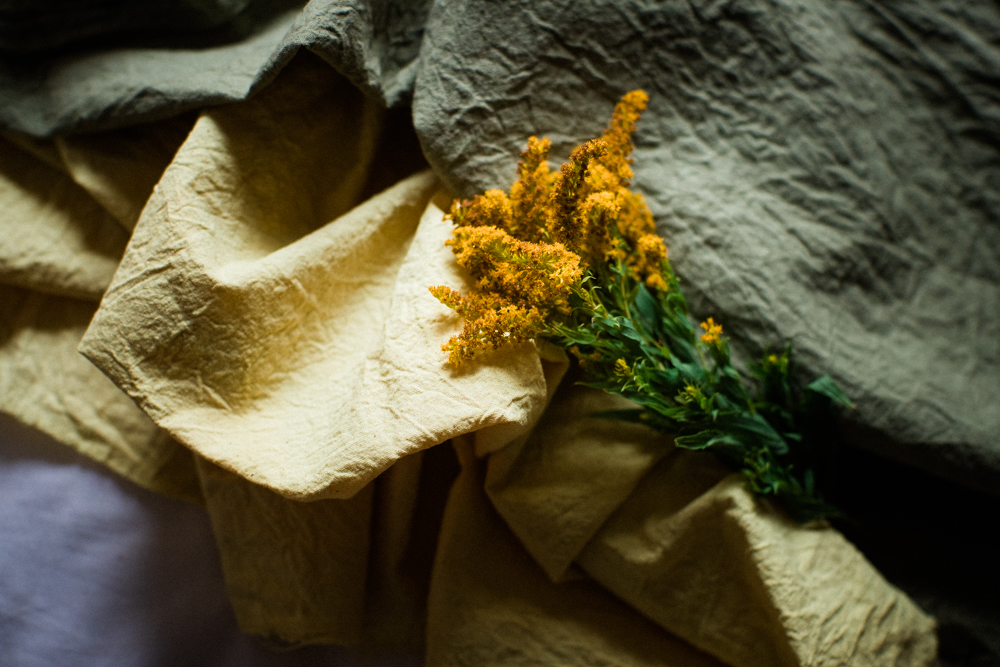
I had to really play around with backgrounds to capture these colours accurately, I found that my wooden table and wooden floors threw the colour balance out too much and tinted the shadows so that I couldn’t colour correct the yellow to be accurate. Finally I managed to get accurate colour representation by taking these photos against a white background.
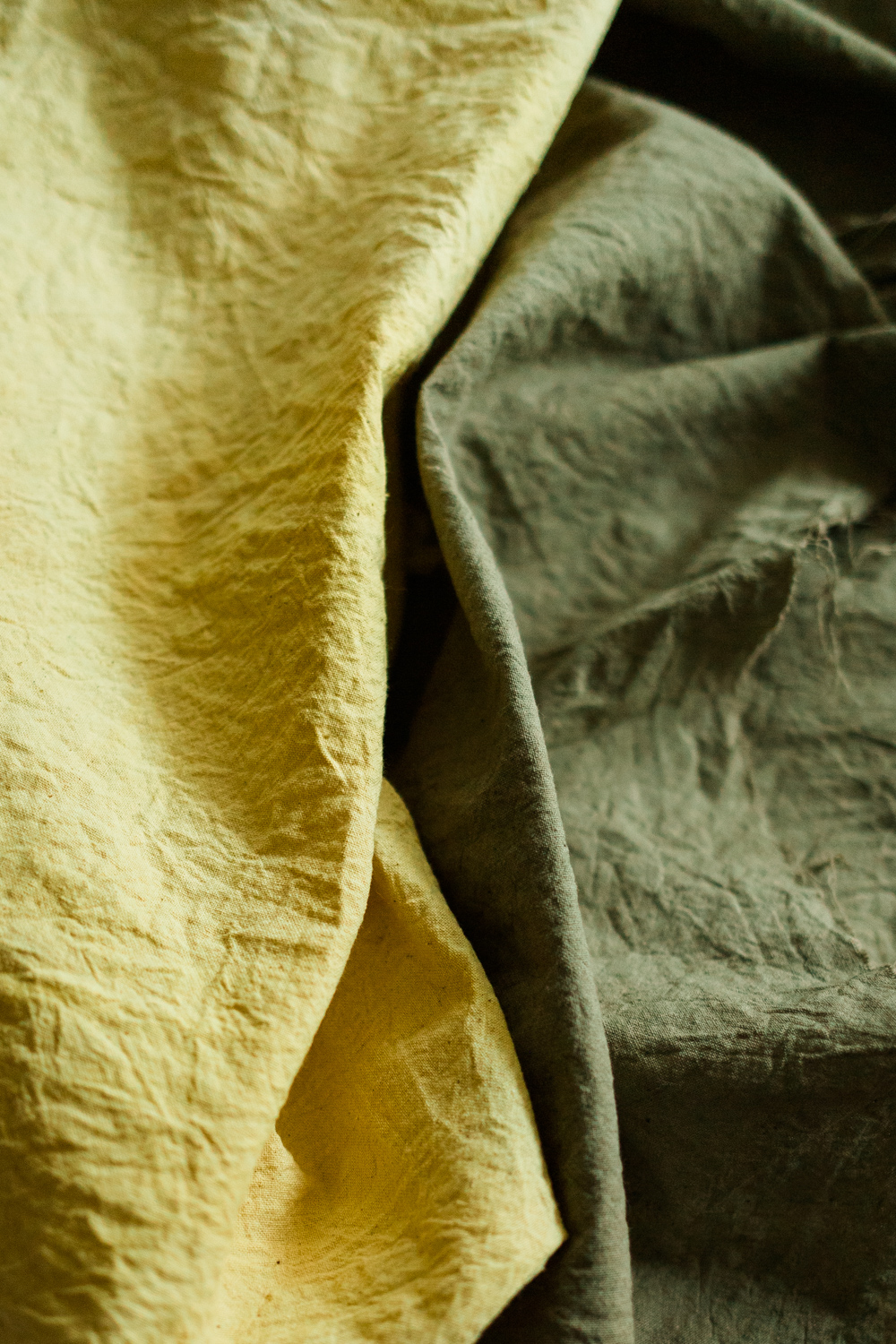
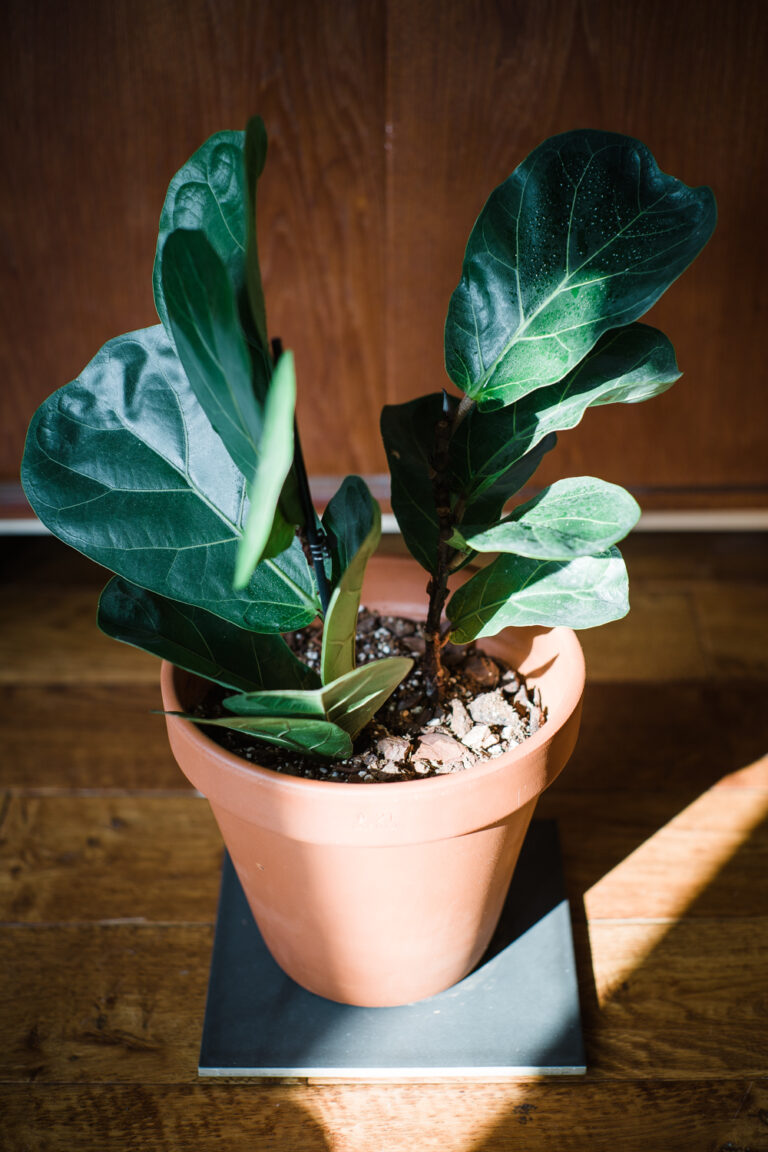
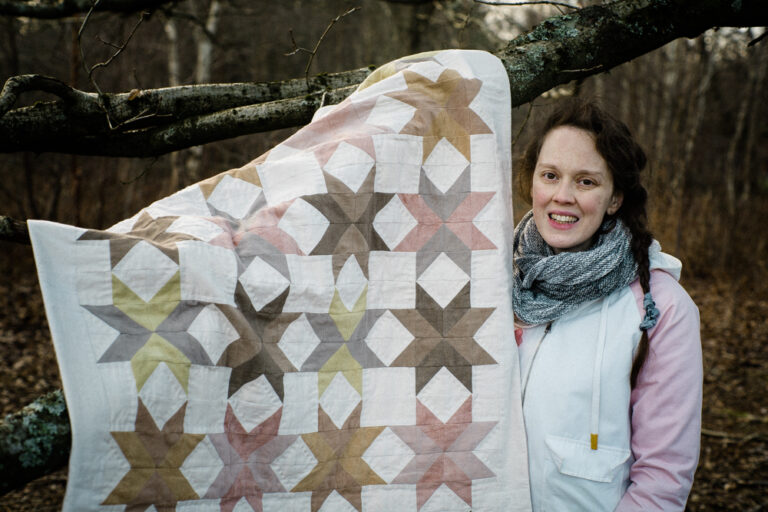
Leave a Reply